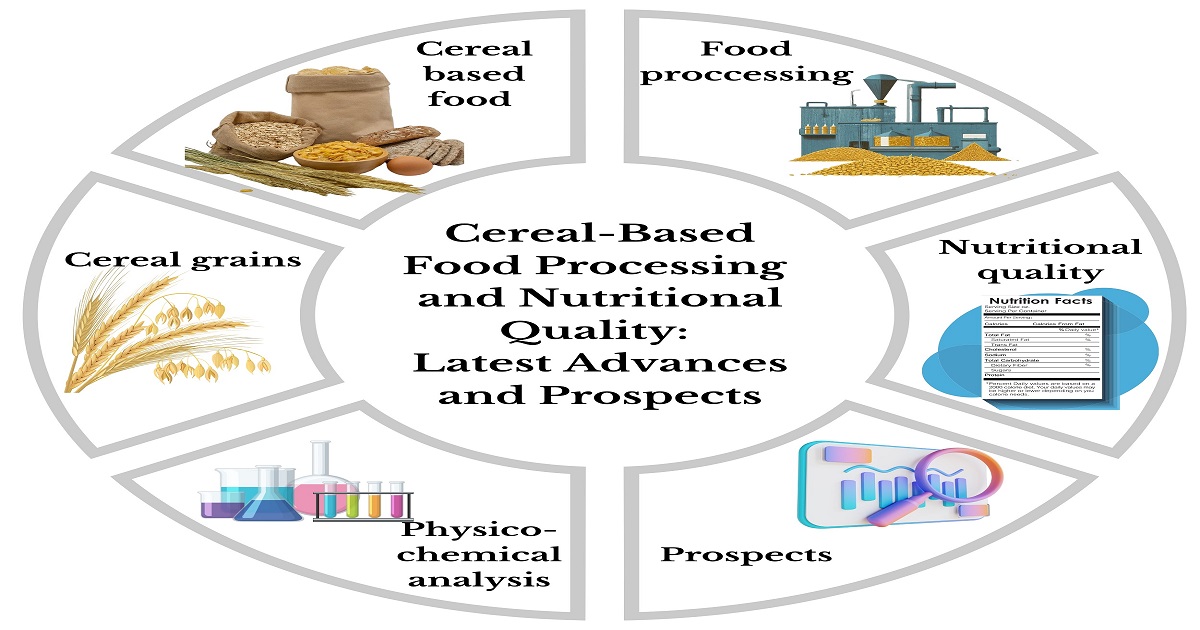- 2.5Impact Factor
- 5.5CiteScore
- 20 daysTime to First Decision
Cereal-Based Food Processing and Nutritional Quality: Latest Advances and Prospects
This special issue belongs to the section “Food Science and Technology“.
Special Issue Information
Dear Colleagues,
Grain foods are a dietary staple in many countries around the world. This includes products such as pasta, bread, pastries, snacks, and breakfast cereals. Currently, many consumers are aware of the foods they eat, and insist that their meals be nutritious and health-promoting. To meet consumer demands, manufacturers are trying to produce new products that meet both sensory requirements and provide the necessary nutrients and health-promoting ingredients in optimal amounts. Cereal products are an ideal matrix for fortification, so their range is constantly expanding.
Cereal grains, although rich in complex carbohydrates, fiber, protein, vitamins, minerals, and bioactive substances, often have certain components in deficient amounts; hence, the fortification of cereal-based foods seems to be justified. Widespread and new food production and fortification techniques are facilitating this task. Fermented and gluten-free products are also becoming popular, responding to specific needs in various disease entities and food intolerances.
This Special Issue encourages the publication of original research papers and review articles on the following:
- Novel and fortified cereal-based foods;
- Common and innovative methods of cereal food production;
- The impact of various processes on the quality and nutritional value of products;
- Prospects for development in cereal-based food production.
Dr. Dorota Teterycz
Dr. Anna Wirkijowska
Dr. Piotr Zarzycki
Guest Editors
Manuscript Submission Information
Manuscripts should be submitted online at www.mdpi.com by registering and logging in to this website. Once you are registered, click here to go to the submission form. Manuscripts can be submitted until the deadline. All submissions that pass pre-check are peer-reviewed. Accepted papers will be published continuously in the journal (as soon as accepted) and will be listed together on the special issue website. Research articles, review articles as well as short communications are invited. For planned papers, a title and short abstract (about 250 words) can be sent to the Editorial Office for assessment.
Submitted manuscripts should not have been published previously, nor be under consideration for publication elsewhere (except conference proceedings papers). All manuscripts are thoroughly refereed through a single-blind peer-review process. A guide for authors and other relevant information for submission of manuscripts is available on the Instructions for Authors page. Applied Sciences is an international peer-reviewed open access semimonthly journal published by MDPI.
Please visit the Instructions for Authors page before submitting a manuscript. The Article Processing Charge (APC) for publication in this open access journal is 2400 CHF (Swiss Francs). Submitted papers should be well formatted and use good English. Authors may use MDPI's English editing service prior to publication or during author revisions.
Keywords
- cereal-based food
- food processing
- nutritional quality
- chemical composition of food
- health properties of food
- innovative technology
- bioactive substances

Benefits of Publishing in a Special Issue
- Ease of navigation: Grouping papers by topic helps scholars navigate broad scope journals more efficiently.
- Greater discoverability: Special Issues support the reach and impact of scientific research. Articles in Special Issues are more discoverable and cited more frequently.
- Expansion of research network: Special Issues facilitate connections among authors, fostering scientific collaborations.
- External promotion: Articles in Special Issues are often promoted through the journal's social media, increasing their visibility.
- e-Book format: Special Issues with more than 10 articles can be published as dedicated e-books, ensuring wide and rapid dissemination.

